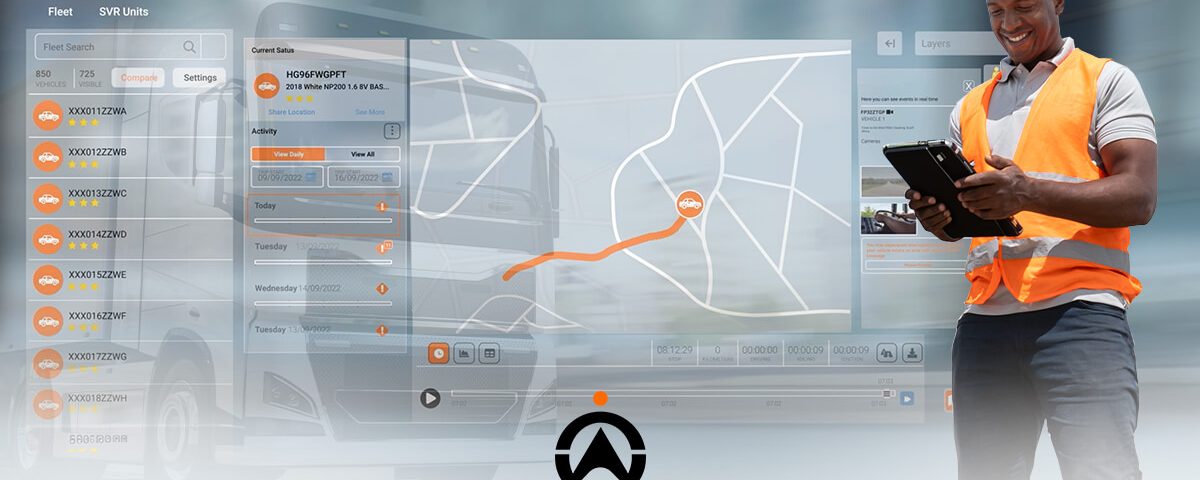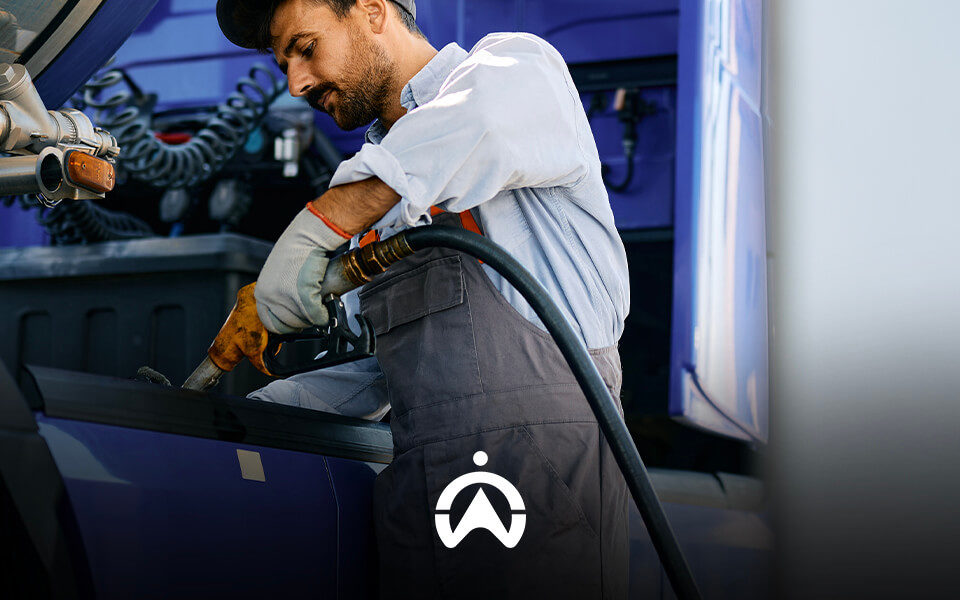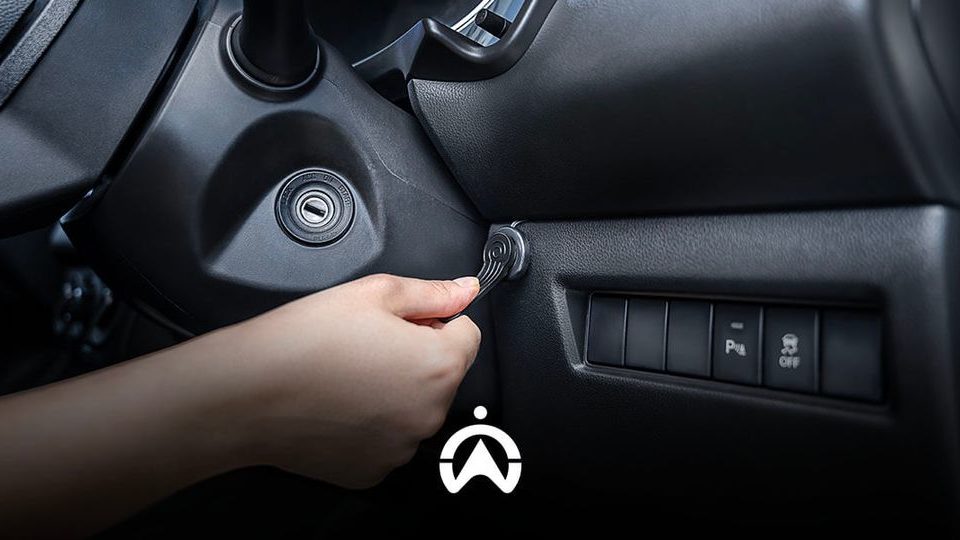The Secret to Fleet Driver Retention: Eye-opening AI Technology Revealed
AI has revolutionised the fleet management industry. Its ability to analyse large amounts of data has enabled fleet managers to make informed decisions and create an environment that fosters driver satisfaction — making it a vital player in boosting driver retention. Let’s find out why and how.
In this article, you will:
- Learn what driver retention is
- Find out why driver retention is important for your fleet growth and success
- Learn how AI technology can help you increase your driver retention
- Learn how AI and the IoT are revolutionising the fleet management industry
- Discover how Cartrack Nigeria’s technology can help you increase your driver retention
What is AI?
AI technology is designed to mimic human-like behaviour and perform various tasks such as understanding speech, analysing data, learning patterns, responding to requests, and more.
This technology has enhanced various aspects of our everyday lives ‒ be it a simple Google search, composing an email, using face recognition, or any streaming service, AI is more common than you think.
In today’s world, it’s providing value for both individuals and businesses and playing a major role in improving driver retention.
What is driver retention?
Simply put — driver retention is a business’s goal of keeping its skilled and talented drivers from leaving the company. The retention of reliable and quality drivers is one of the most important contributing factors to the success and growth of any fleet operation.
The importance of driver retention in fleet management
Driver retention plays a vital role in the success and stability of any fleet operation. Here are five reasons why:
- Decreases costs:
Hiring a new driver is not only time-consuming but can affect your finances. A new driver requires extensive training to ensure that their skills are up to speed and in accordance with company standards.
- Encourages company growth:
Turnover hampers the growth of a company. The longer a driver is at a company, the more knowledgeable they are about company procedures, practices, and functions. Driver retention allows a company to focus on business growth instead of new employee training.
- Increases efficiency:
A lower number of drivers in your fleet means the rest of your driving staff will need to pick up on the overlap of tasks. This can cause unnecessary stress and frustration within the workplace, resulting in tasks being rushed or missed, affecting the overall quality. More experienced drivers have better judgement and familiarity with potential risks, which also helps decrease the likelihood of accidents.
- Sustains productivity flow:
Drivers who work within the organisation for long periods add significant value. They understand the company’s vision and are well-equipped to fulfil their duties, having acquired all the important basic skills needed to effectively complete tasks more efficiently. This stable and satisfied driver workforce helps guarantee a consistent and reliable service for customers.
- Increases driver loyalty:
When drivers feel supported and valued, they tend to be more loyal towards the company as this increases the likelihood of them developing a long-term relationship with the company. Loyal drivers also take better care of the equipment they use than those without loyalty to the company. Driver loyalty also contributes to a sense of belonging and accountability which helps boost productivity.

Strategise and prioritise for driver retention
Keeping your drivers happy enough to stay with a company is easier said than done. An effective fleet driver strategy is needed to find and hire the right people, plus create an environment that values employee input and satisfaction. Retaining the talent you have is key to reducing unnecessary business costs and improving overall performance, something AI-powered fleet software can help you master.
How does AI play a role in driver retention?
- Real-time analytics:
By collecting and analysing real-time data, you can keep an eye on your vehicles in real time. These telematic devices, which help you identify potential issues, improve fuel efficiency, and even detect vehicle misuse, ensure that your fleet always operates smoothly. With immediate alerts, you can reduce the risk of accidents, lower fuel costs, and ensure your fleet’s safety.
How does this impact driver retention:
Real-time analytics add a sense of security and protection for your drivers. This software helps you see exactly where your drivers are, what time they were there, and how well they drove. It also protects your drivers from any false claims and legal costs that may arise from road accidents. Having this sense of protection can also help your drivers feel safe which has a positive impact on driver morale.
- Driver safety management:
While ensuring driver safety is a top priority for many fleet managers, continuously monitoring and improving driver behaviour while staying on top of other fleet tasks can pose a challenge. However, with AI’s ability to streamline driver safety management using AI-powered telematics devices, this is no longer a problem.
How does this impact driver retention:
This use of AI isn’t just for identifying problem areas. Through the tracking and scoring of individual driver performance, you can identify key areas that require improvement. With this knowledge, you can create personalised skills development and training plans to help your drivers improve and develop safer driving habits. This lets your drivers know that you value them and are willing to invest in them, which positively impacts driver retention.

How Cartrack Bigeria improves driver retention through driver safety
One of the biggest concerns for a fleet manager is the management of driver behaviour. This is crucial for customer satisfaction, fleet success and driver retention. Driver retention entails keeping skilled employees who can adhere to company codes, rules and functions. With concerns including safety, speed, and driver fatigue typically being self-regulated, AI can help simplify this, keeping you informed of your driver’s behaviour. Cartrack Nigeria brings this convenience to you with its industry-leading Live Vision AI camera technology.
How does Cartrack’s Live Vision AI camera technology work?
IoT (Internet of Things) powers this AI technology that helps boost driver retention. This network of interconnected devices installed with sensors, software, and connectivity provides you with real-time data on your vehicle.
With Live Vision, we bring this AI-powered and live-streaming technology to you, which makes it possible to have 24-hour access to your vehicles inside and out. It boosts your fleet’s safety with in-cabin audible alerts that immediately notify your drivers about their distracted or dangerous driving behaviour. It can detect speeding, cellphone use and more, allowing drivers to correct their actions in real time and prevent an accident.
This technology helps you prioritise driver retention through three fundamental steps:
- Informing: Accurately assessing a driver’s skills requires a reliable safety system that can give you real-time insights. With Cartrack’s Live Vision AI Cameras, you can receive this information as it happens and on demand.
- Alerting: Cartrack’s technology is equipped with preventative in-cabin audible voice alerts that immediately notify your driver about potential safety violations. By alerting the driver to avoid dangers on the road, they feel a sense of safety and protection, which can improve driver retention.
- Improving: With immediate real-time alerts, drivers can immediately correct their behaviour live in the moment and prevent accidents or injuries from occurring. It also speeds driver improvement up as drivers no longer have to wait for weekly/monthly progress reports to learn about their mistakes.
This is how the AI camera technology works to help boost driver and fleet safety:
- Front collision warning: With Cartrack’s ADAS cameras, drivers are alerted when they drive dangerously close to a vehicle in front of them. This investment in the safety of your drivers and fleet essentially protects them from potential collisions.
- Smoking detection: Our DMS cameras detect when drivers smoke while driving, alerting them to keep both hands on the wheel so they can be more focused.
- Distracted or fatigued driving: The camera can track the position and orientation of the driver’s head and eyes. If your driver looks away from the road, which is a good indication of driver distraction, an event will be generated, and the driver will immediately be alerted.
- Mobile phone use detection: The AI camera detects when your driver uses their cell phone while driving, alerting them so they put the phone away, pay more attention to the road and keep both hands on the steering wheel.
- Yawning: Yawning is a common indicator of extreme fatigue, which negatively impacts driver reaction time. Through real-time alerts, this technology audibly alerts drivers when they yawn so they can focus on the road and not fall asleep at the wheel.
This AI camera technology monitors your drivers’ activity, helping you offer preventative coaching, training, and protection from false claims. This empowers your drivers to be more accountable, improving general morale and overall safety. An empowered and safe driver is a happy one — which is the recipe for driver retention.

Take Charge of Driver Retention with Cartrack Nigeria
Looking to increase driver retention while effectively managing your fleet? Look no further. Cartrack’s Live Vision AI camera solution not only improves driver and fleet safety but it empowers driver accountability which boosts productivity, morale and profits.
Let our technology help you keep drivers happy and loyal. Contact Cartrack Nigeria today.




